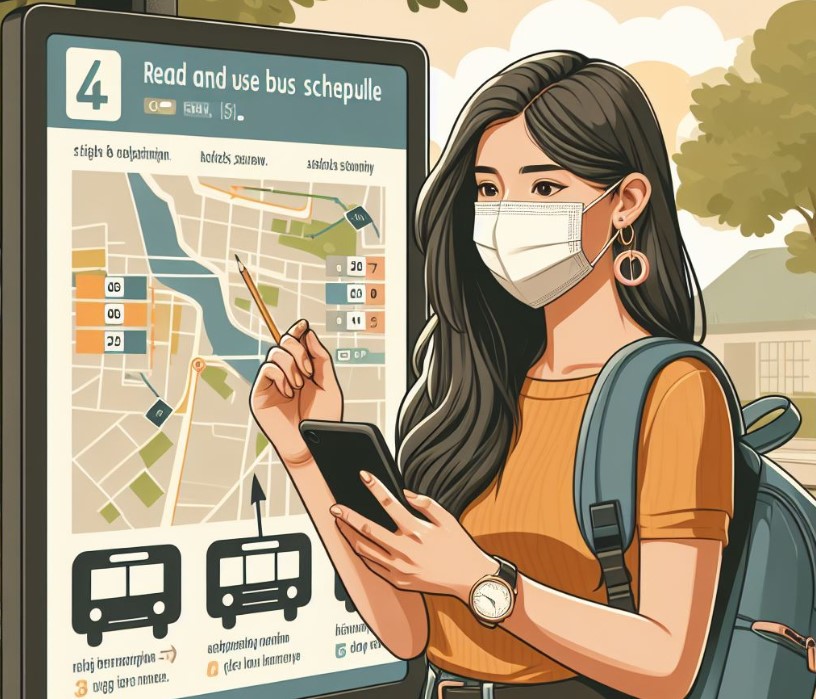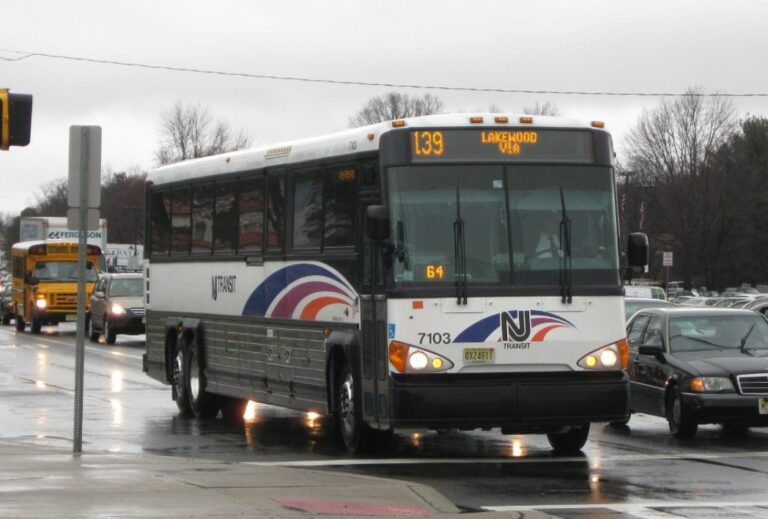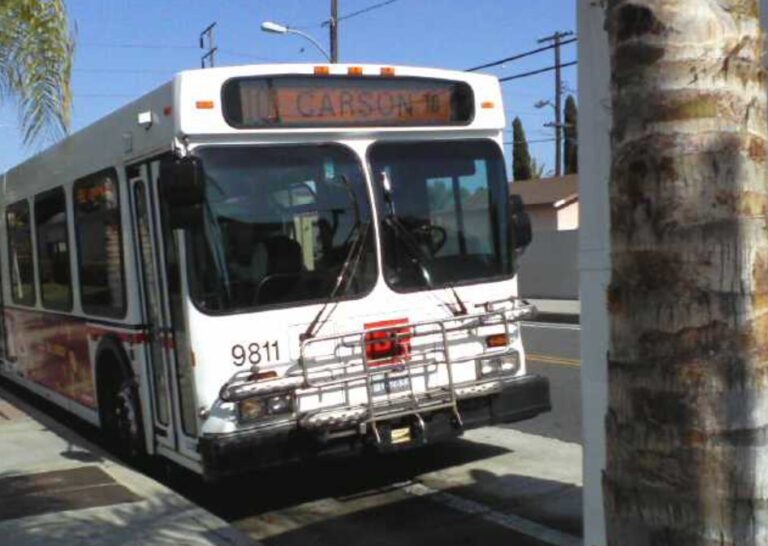How To Read A Bus Schedule? All You Need To Know
Navigating the world of public transportation can be daunting, especially when it comes to understanding bus schedules. This comprehensive guide, centered around the crucial question of How To Read A Bus Schedule? is designed to simplify this process for you.
Key Takeaways
- Identify the bus route and destination
- Understand the schedule format
- Note the service times and frequency
- Pay attention to special symbols or notes
- Familiarize yourself with holiday or weekend variations
How To Read A Bus Schedule?
To read a bus schedule, follow these steps:
- Identify the Route: Find the route number or name that corresponds to your destination.
- Check Timings: Look at the schedule to see the departure and arrival times at your desired stops.
- Understand Symbols: Be aware of any symbols or notes that indicate special service conditions like limited stops or peak hour services.
- Weekday vs. Weekend: Note any differences in the schedule for weekdays, weekends, and holidays.
- Frequency: Observe the frequency of the service at different times of the day.
- Plan for Delays: Always consider potential delays due to traffic or other factors.

Understanding Bus Routes and Numbers
Identifying Your Route
To start, identify your bus route. This is typically a number or a name that signifies the path the bus will take. Bus routes are designed to cover specific areas, and each route has its schedule.
Significance of Route Numbers
Route numbers are not arbitrary; they often have a system behind them. For instance, certain numbers might denote specific areas or types of services. Understanding this can make it easier to navigate the system.
Schedule Format and Symbols
Deciphering the Format
Bus schedules come in various formats, but most include key information such as departure and arrival times, stop locations, and days of operation. It’s crucial to understand how this information is organized.
Interpreting Symbols and Notes
Often, schedules use symbols or notes to convey important information. This could include peak-hour services, limited-stop services, or special holiday schedules. Ignoring these can lead to misunderstandings and missed buses.
Service Times and Frequency

Regular Service Hours
Knowing the service times is crucial. This includes understanding when the first and last buses run, as well as the frequency of the service throughout the day.
Weekend and Holiday Variations
Bus schedules can vary on weekends and holidays. These changes are typically highlighted in the schedule but require careful attention to ensure accurate planning.
Special Considerations
Accessibility Features
Many bus schedules include information about accessibility features. This is vital for passengers with disabilities or those requiring special assistance.
Seasonal Adjustments
Some routes have seasonal adjustments, which are often indicated in the schedule. These could be due to school holidays or seasonal demand changes.
Tips for Effective Schedule Reading
Using Apps and Online Resources
Many public transportation systems now offer apps or online resources. These can provide real-time updates and help in interpreting the schedule more effectively.
Planning for Delays
Always factor in potential delays. This could be due to traffic, weather, or other unforeseen circumstances. Planning can mitigate the impact of these delays.
What Do The Lines Mean On A Bus Timetable?
On a bus timetable, lines typically represent different elements of the schedule. Horizontal lines often separate different times of the day, such as morning, afternoon, and evening services.

Vertical lines may separate columns that indicate specific information like bus stop names, departure times, and arrival times at subsequent stops. In some timetables, diagonal or curved lines are used to illustrate transfers or interconnected routes.
Colored lines can indicate different routes or types of services, such as express or local services. The key or legend of the timetable usually explains the meaning of these lines for easy interpretation.
How Do Bus Numbers Work?
Bus numbers are typically assigned based on the route or the area the bus serves. The numbering system can vary greatly from one city to another. In some systems, the numbers might be sequential or grouped based on geographic regions or the type of service (e.g., local, express).

In others, the number could indicate specific paths or destinations. Some transit systems also use a combination of letters and numbers, where the letters might represent a particular area or type of service. Understanding the specific numbering system of a city’s public transportation system is crucial for efficient travel.
What Is The Meaning Of Bus Schedule?
A bus schedule is a timetable that outlines the planned departure and arrival times of a bus at various stops along its route. It serves as a guide for passengers to plan their journeys, indicating when a bus is expected to arrive at and depart from each stop.
The schedule is designed to provide consistency and reliability in bus services. It includes information about the frequency of trips, the duration of each journey, and any special service notes like peak hours or weekend variations.
The primary purpose of a bus schedule is to ensure that passengers have a predictable and efficient mode of transportation.
Conclusion
Understanding How To Read A Bus Schedule is a vital skill for efficient travel. This guide has provided comprehensive insights into interpreting schedules, identifying routes, and planning your journey effectively. Remember, the key to a smooth trip lies in careful preparation and being aware of the variations and special notes in bus schedules.
Frequently Asked Questions
How do I use a bus schedule to plan a round trip?
To plan a round trip, first determine the schedule for your outbound journey. Then, look at the return route’s schedule, ensuring you account for any variations in service throughout the day. Always have an idea of the last bus timing for your return to avoid being stranded.
Are there special bus services for events or tourist destinations?
Yes, many cities offer special bus services for events or tourist areas. These can be seasonal or event-specific and may have unique schedules and routes. Check local transit websites for details.
What’s the best way to plan a trip with multiple bus transfers?
When planning a trip with transfers, consider the transfer points, waiting times, and the overall travel time. Use a trip planner tool on transit websites or apps to map out the most efficient route.
How can I find out about seasonal changes to bus schedules?
Seasonal changes are usually announced on transit authority websites, through customer emails, or via their mobile apps. It’s advisable to check these sources as seasons change, especially during summer and winter.

Welcome to the exhilarating world of Matt Rex, a professional car racer turned renowned vehicle enthusiast. Immerse yourself in his captivating blog as he shares heart-pounding adventures, expert reviews, and valuable insights on cars, trucks, jets, and more. Fuel your passion for speed and discover the beauty of vehicles through Matt’s engaging stories and meticulous expertise. Join the ever-growing community of enthusiasts who find inspiration and expert advice in Matt Rex’s blog—a digital hub where the thrill of speed meets the pursuit of knowledge.







